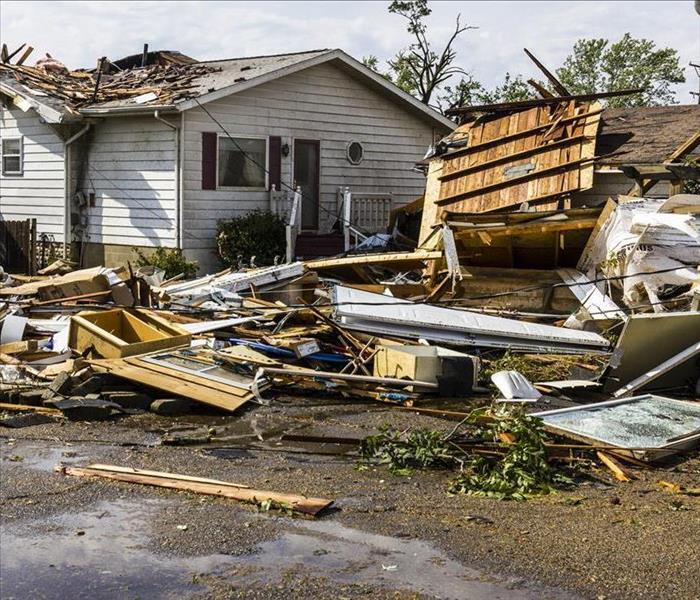What Happens After Water Damage?
10/18/2021 (Permalink)
Severe storms can transpire at any time of the year in Bountiful, UT. It's important to know what to do beforehand in case your home is subjected to a powerful storm, especially one that carries an influx of water into the house. Several serious issues can arise just from the excess moisture, such as:
- Soaked, stained drywall
- Destroyed insulation
- Ruined carpet and padding
- Rotting wood
- Mold growth
- Pungent odors
These problems will require quick action involving tear out of ruined materials and thorough drying to mitigate the loss.
What Are the Storm Restoration Procedures?
Post-storm, it's critical to put safety first. Before beginning any of the following steps, make sure you can safely navigate the area and take care of any emergency restoration that you can safely handle yourself.
1. Contact Your Homeowners Insurance
Call your homeowners insurance company as soon as possible to begin the claims process. An adjuster may need to come out and assess the damage before restoration can begin. In the meantime, take photos of all of the damage to give to your agent.
2. Check Electrical
Before going into the area, the safest option is to turn off electricity to the house. Electrical currents can flow through standing water, seriously injuring anyone who steps into it. If you can't safely navigate to the breaker box to turn it off, call your power company or an electrician before proceeding. Once the power is turned off, unplug water-exposed electronics and appliances from their outlets.
3. Deal With Flooding
Standing water indoors is best left to water damage remediation professionals. They have the expertise and industrial equipment to complete the restoration thoroughly and as quickly as possible. While you're waiting for the technicians to arrive, you can mitigate damage by beginning the water removal process. A wet/dry vacuum will be the safest and most efficient method, but mops and towels will do if you don't have access to one. You can also begin the tear-out process by removing materials from the area, such as soaked carpet, padding, and drywall. Also, you must remove as many of the contents as possible to make room for the technicians to complete the restoration process. After removing them from the area, you can determine if each item is salvageable or not.
4. Check the Roof
Check your roof to see if you notice any holes or missing shingles. Unless you have experience, it's best to let a professional contractor get on the roof to inspect the damage and make any repairs. They may have to tarp it temporarily to protect the home from further damage until they can permanently repair it.
If your home is affected by a major storm, you're likely to have a significant loss that will take time, expertise, and the proper restoration tools. Unfortunately, it's not as simple as extracting the water; it'll probably involve tear out, sanitizing, and extensive drying. It could involve much more if mold has begun to grow. It's vital to be proactive and learn the basic steps should you endure one of these disasters in the future.






 24/7 Emergency Service
24/7 Emergency Service